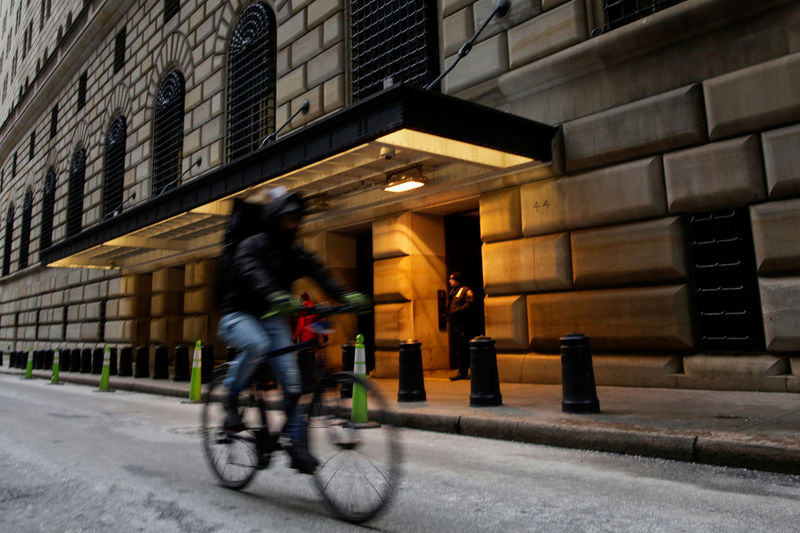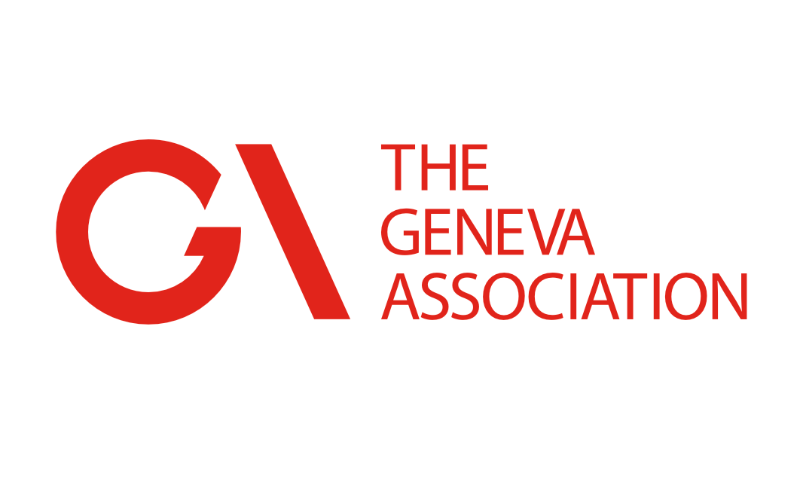Good Times Restaurants, Inc. (NASDAQ:GTIM) Q4 2022 Earnings Conference Call December 15, 2022 5:00 PM ET
Company Participants
Ryan Zink – President & CEO
Matthew Karnes – SVP, Finance
Conference Call Participants
Operator
Good afternoon, ladies and gentlemen. Welcome to the Good Times Restaurants Inc. Fiscal 2022 Fourth Quarter Earnings Call. By now, everyone should have access to the company’s earnings release, which is available in the Investors section of the company’s website. As a reminder, a part of today’s discussion will include forward-looking statements within the meaning of federal securities law.
These forward-looking statements are not guarantees of future performance, and therefore, you should not put undue reliance on them. These statements are also subject to numerous risks and uncertainties that could cause actual results to differ materially from what we expect, and therefore, investors should not place undue reliance on them. And the company undertakes no obligation to update these statements to reflect the events or circumstances that might arise after this call.
Such risks and uncertainties include, among other things, the market price of the company’s stock prevailing from time to time, the nature of other investment opportunities presented to the company, the company’s financial performance and its cash flows from the operations, general economic conditions, which could adversely affect the company’s results of operations and cash flows.
These risks also include such factors as a disruption to our business from the COVID-19 pandemic and the impact of the pandemic on results of operations, financial condition and prospects, which may vary depending on the duration and extent of the pandemic and the impact of federal, state and local governmental actions and customer behavior in response to the pandemic; the impact and duration of staffing constraints at our restaurants; the uncertain nature of current restaurant development plans and the ability to implement those plans and integrate new restaurants; delays in developing and opening new restaurants because of weather, local permitting and other reasons; increased competition; cost increases or shortages in raw food products; supply chain and inflationary factors due to the unknown impacts of the war in Ukraine; and other matters discussed under the Risk Factors section of Good Times’ annual report on Form 10-K for fiscal year ended September 27, 2022, filed with the SEC and other filings with the SEC.
During today’s call, the company will discuss non-GAAP measures, which they believe can be useful in evaluating our performance. The presentation of this additional information should not be considered in isolation or as a substitute for results prepared in accordance with GAAP and reconciliation to comparable GAAP measures available in our earnings release. And now I would like to turn the call over to Ryan. Please go ahead, sir.
Ryan Zink
Thank you, Emma, and thank you all for joining us on the call today. As mentioned, you should have access to our earnings release and our annual 10-K filing. We are thrilled to have grown same-store sales at both brands this year while navigating continued labor and product shortages, rising cost of goods and the uncertain nature of consumer behavior in a highly inflationary environment.
This year represents a record sales year for Bad Daddy’s in the third consecutive year in 10 of the last 11 years with growth in same-store sales at Good Times. As with prior quarters, we remain displeased with the company’s profitability this year. However, our high standards prevent us from compromising on product quality or making other decisions that would drive elevated profitability in the short term at the expense of customer satisfaction and loyalty, which we know are the most important drivers of the long-term profitability and success of both of our concepts.
Our focus this year has been on organic growth and customer traffic from our existing restaurant footprint. And our investments this year have reflected that mission. Last November, we launched new online ordering experiences at both brands, including a refreshed web experience at Bad Daddy’s, the introduction of online ordering for the first time at Good Times and the release of mobile apps at both brands.
Sales through this platform continue to increase. Digital sales for which we include orders not just through our own platforms, but through our delivery partners, exceeded 10% for the Good Times concept during the fourth quarter. At Good Times, our digital sales lean heavily on orders originating through our delivery partners. And our goal for 2023 is to begin shifting those into our native platforms and further direct traffic to direct digital, growing our app and web-originated orders.
Shortly after the end of the fiscal year, we completed the installation of digital menu boards and modern lane timers at all of our company-operated Good Times restaurants. And before the end of the fiscal second quarter, we expect all but 2 of our Colorado-franchised restaurants to have installed the new menu board, which are a critical part of the modernization of the Good Times brand.
We recently completed the first installation of our new signage package at Good Times, and we expect to complete at least 1/3 of the system this year. Back in late 2019, we reduced the menu at Good Times while still maintaining a compelling variety of products to improve our kitchen efficiency and our order accuracy. Though we continue to feature our seasonal and monthly burger and tested flavors, the commitment to a focused menu ultimately remains.
We continue to optimize the menu with a dual focus of improving labor efficiency to offset increasing labor costs, but also delivering better product to our customers by serving fresher and hotter burgers and fries at a higher speed than our competitors. We’re extremely impressed not only with our sales growth at Bad Daddy’s, but at the customer retention and traffic counts, with 3.7% same-store sales and only 5.7% average price during the quarter. The implied 2% traffic erosion is significantly better than the casual dining benchmark as measured by Black Box Intelligence.
At Bad Daddy’s, digital sales make up about 23% of our sales, and total off-premises sales are approximately 27% of our restaurant sales. Sales through third-party aggregators have been surprisingly consistent even as customers have reembraced on-premises visits. And third-party delivery sales continue to represent approximately 15% of our orders. We offer delivery through our own online ordering and app-based ordering platform.
And similar to our approach for Good Times, we’re exploring ways to shift traffic from the aggregators to direct ordering. We are dedicated to an elevated level of customer service, but our true focus remains serving up unbelievable burgers with unparalleled customization. During the initial throes of the pandemic and thereafter, we simplified our menu at Bad Daddy’s.
Since then, we have reintroduced seasonal chef specials at Bad Daddy’s to provide momentum for incremental visits to shift mix into above-average margin products, but while at the same time, retaining efficient, highly productive kitchens. Moving into 2023 and 2024. We’re planning expansion of Bad Daddy’s with one lease already signed in Greater Huntsville, Alabama that we expect to open in the fourth fiscal quarter of 2023 with potential sites under negotiations in Birmingham and Raleigh, and evaluation of expansion opportunities in other markets.
Restaurant margins are compressed this year, but we expect them to remain so into the first quarter or first half of fiscal 2023 as we absorb an 8% minimum wage increase in our Colorado restaurants. Wage rate inflation has been intense, but our operators have done an excellent job of managing productivity to minimize the increases in labor cost. Cost of sales have been more challenging for us.
During the last quarter of the year, we continue to see extremely high chicken breast costs, which have more recently started to recede but still remain elevated. Beef and bacon were also elevated during the fourth quarter, but have shown moderation in pricing into the first fiscal quarter of 2023. Throughout the restaurant P&L, increased delivery costs, primarily at Good Times or that portion of the business has seen meaningful growth and elevated repair and maintenance costs across both concepts have also been a source of margin compression.
Shifting traffic to our direct purchasing platforms is one of several ways in which we’re attempting to reduce the impact of high-cost delivery aggregator fees. The current inflationary environment has caused other restaurant groups to reduce or reevaluate aspects of the development program. We have, over the past year, focused our capital deployment in areas where we believe we will attain the best return in assets with predictable cash flow, including both the acquisition of our previously franchised Bad Daddy’s restaurant and investment into our already existing restaurants.
Additionally, we have continued to repurchase our stock through a repurchase program, which has resulted in the purchase of 316,000 shares under the company’s — of the company’s stock during fiscal 2022. We continue to repurchase shares under this program during fiscal 2023. A saying that’s been recently posted and reposted on LinkedIn says something to the effect of restaurant jobs have always been hard, it’s just that more people are now realizing this fact.
And that saying likely applies to the industry itself as well. And that it, too, the industry itself, has always been very challenging. Restaurant companies and concepts often deviate from core strategies and become willing to compromise what differentiates them. We continue to stay the course and are confident about our position in both of the restaurant segments that we operate in. We’ll continue to strengthen our brands by creating great experiences appropriate for each concept for our customers, thoughtfully developing new locations and rewarding hard-working team members and leaders for their contributions in building brand equity for Good Times and for Bad Daddy’s. With that, I’ll turn to Matthew to review this quarter’s results.
Matthew Karnes
Thank you, Ryan. Total revenues increased 5% to $35.2 million for the quarter. Total restaurant sales increased $1.7 million to $34.9 million for the quarter. Total restaurant sales for Bad Daddy’s restaurants increased $1.5 million to $26 million for the quarter, and this increase is due to average menu price increases throughout the year as well as the continued strength of off-premise sales and strong demand for in-person dining.
Same-store sales increased 3.7% during the quarter, with 38 Bad Daddy’s in the comp base at the end of the quarter. Cost of sales at Bad Daddy’s were 32.8% for the quarter. That’s a 170 basis point increase from last year’s quarter and the result of significantly higher food and packaging costs as seen through inflationary and supply chain pressure. Bad Daddy’s labor costs decreased by 110 basis points compared to the prior year quarter to 33.2% for the quarter.
This decrease as a percentage of sales reflects improved productivity and lower unit level incentive compensation, the latter of which resulting from lower restaurant-level profitability. Occupancy cost at Bad Daddy’s decreased 20 basis points to 6.4% due primarily to the leveraging of higher sales. Bad Daddy’s other operating costs were 14.7% for the quarter, an increase of 170 basis points, and that’s primarily due to higher increased spending on repair and maintenance expenses, restaurant technology costs, utilities and increases in restaurant supply costs.
Overall, restaurant-level operating profit, a non-GAAP measure, for Bad Daddy’s was approximately $3.4 million for the quarter or 12.9% of sales compared to $3.7 million or 15% last year. The decline is primarily due to the increased cost of sales and other restaurant operating costs. Restaurant sales at Good Times were $8.9 million, an increase of $0.2 million, resulting from 5.9% comp sales, partially offset by the closure of one restaurant earlier in fiscal 2022.
Food and packaging costs for Good Times were 32.3% for the quarter, an increase of 430 basis points compared to the last year’s quarter. Again, the result of significant inflationary pressures on food and packaging material, primarily beef, bacon and oil-based products and rolling over unusually low costs for our all-natural beef in the prior year quarter. Total labor costs for Good Times decreased to 31.9% and from 32.5% for the quarter last year due primarily to increases in unit level productivity.
Occupancy costs at Good Times were 7.8%. That’s a slight increase of 10 basis points from the prior year quarter due primarily to increased real property tax assessments. Delivery sales — sorry, Good Times’ other operating costs were 12.7% for the quarter. That’s an increase of 270 basis points and is due primarily to additional delivery service charges, accompanying a higher mix of delivery sales and higher repair and maintenance expenses during the quarter.
Good Times restaurant-level operating profit decreased by $0.5 million for the quarter to $1.4 million. As a percent of sales, restaurant-level operating profit decreased by 600 basis points versus last year to 15.3% due primarily to higher costs previously discussed. Combined general and administrative expenses were $2.8 million during the quarter or 8.1% as a percent of total revenue. This represents an increase of $0.5 million versus the prior year quarter.
G&A expenses increased versus the prior year due primarily to increased legal fees, training expenses, regional cost and home office salary expense, partially offset by decreased underwriting losses associated with the self-insured employee health care plan and rolling over costs related to our tender offer in the fourth quarter of ’21. We recorded impairment of long-lived assets of $1.4 million during the quarter, and that’s for the impairment of one Bad Daddy’s restaurant in the Atlanta, Georgia market.
No impairment costs were recorded in the prior year quarter. Our net loss to common shareholders for the quarter was $1.3 million or a loss of $0.10 per share versus income to common shareholders of $1.3 million or $0.10 per share in the fourth quarter last year. For the full fiscal year, our net loss to common shareholders was $2.6 million or a loss of $0.21 per share versus income of $16.8 million or $1.32 per share in the prior year-to-date period.
Adjusted EBITDA for the quarter was $0.8 million compared to $2.5 million for the fourth quarter of 2021. And for the year-to-date period, our adjusted EBITDA was $4.8 million versus adjusted EBITDA of $9.6 million for the same period in fiscal 2021. We finished the quarter with $8.9 million in cash and no long-term debt. And I will end with that I, too, am thrilled that we continue to grow same-store sales at both brands, and we continue to invest in our restaurants, our employees and our customers. And with that, I will give it back to Ryan.
Ryan Zink
Thank you, Matthew. Emma, at this time, we can open the call for questions.
Question-and-Answer Session
Operator
[Operator Instructions]. Your first question comes from the line of Brian London.
Unidentified Analyst
I was wondering if you guys can — if you can’t provide detail, maybe some general color on the traffic across both brands. I’ve watched — follow a lot of restaurants over the years, and I’ve watched prices increase and traffic decline — even before the pandemic, I was watching this pattern. So again, if you can’t provide detail, that’s fine. A general feel would be interesting, too.
Ryan Zink
Certainly, Brian. As I mentioned during my prepared remarks, during the fourth quarter, we had traffic erosion at Bad Daddy’s of about 2%, and that was sitting on price of about 5.7%. We didn’t go into this as much on — in the prepared remarks, but nothing has really changed in terms of our strategy around price for Bad Daddy’s, which we’ve commented before and in our filings have stated that we’ve tried to be modest in our price increases.
And I think you’d find based upon the CPI numbers, food away from home, in particular, food — full-service food away from home recently came in for the month of November at 8.0%. Our price increases have been less than that. And our strategy is to try and do right by the customer. And in the short run, you’ve seen that somewhat in our increased cost of sales. That’s been our strategy for Bad Daddy’s. I would say the price increases across the segment in fast food have been, generally speaking, higher and — although most recently, the Bureau of Labor and Statistics numbers for the CPI has been slightly under full service.
We’ve taken actually a little bit more price at the Good Times concept. We have seen a little more traffic erosion there. And we’re allowing that data to influence future decision-making. I think the challenge we have at Good Times and at 12 of our Colorado restaurants at Bad Daddy’s is simply the labor cost that is attributable to the higher minimum wage. And that has driven up, as I mentioned, again, in the remarks, 8% coming in January of 2023 because it’s a CPI-driven price mechanism there.
So very important to us. I agree with you that it’s concerning. Its — I have seen restaurant companies in the past increase pricing too quickly and beyond the level that’s sustainable for the customer and that is — that goes into our thinking in every pricing decision that we make.
Operator
[Operator Instructions]. There are no further questions today. Ryan, I turn the call back to you.
Ryan Zink
Thanks again, Emma. Pressing on into 2023, we’re excited about the future for each of our brands and for our company as a whole. With a strong balance sheet, relevant concepts as demonstrated by the strong sales and an amazing group of leaders at all levels of the team, we’re poised to continue to create greater value for shareholders. My thanks and appreciation go out to the entire team who take care of their customers.
That’s whether those customers are visiting in the restaurants or their internal customers who are cared for by individuals here at our home office. With that, we will conclude today’s call. I thank you all for joining us today, and I wish you all a safe and happy holiday season.
Operator
Thank you for attending today’s conference call. You may now disconnect.









































